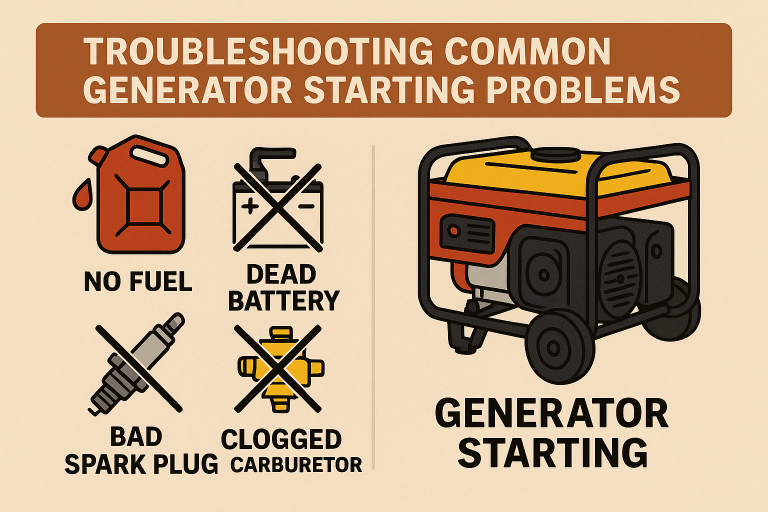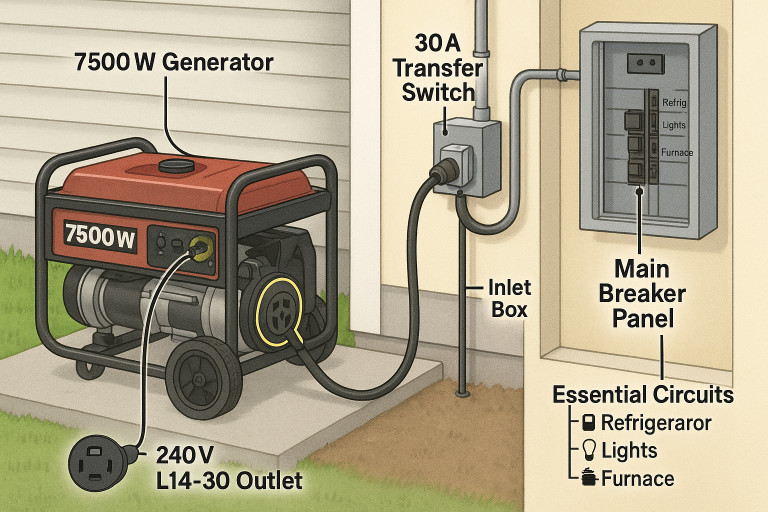Is A Transfer Switch Required For A Generator?
I know how crucial it is to have a reliable backup power source. That’s why I understand the importance of a transfer switch for a generator.
In this article, we’ll explore whether a transfer switch is necessary and why it’s an essential piece of equipment. It serves as the connection point between a generator and a building’s electrical system, ensuring that power is directed to the circuits during an outage.
Without it, connecting a generator through extension cords can be unsafe and impractical.
Key Takeaways
- A transfer switch is essential for connecting a generator to a building’s electrical system.
- It ensures that the generator supplies power to the building’s circuits during a power outage.
- The transfer switch isolates the generator from the utility power grid to prevent back feed.
- Choosing the right transfer switch and professional installation are crucial for safety and compliance.
The Importance of a Transfer Switch for Generator Connections
Connecting a generator to a building’s electrical system requires the installation of a transfer switch, ensuring a safe and reliable power supply during outages. Generator safety is of utmost importance, and a transfer switch plays a crucial role in achieving it.
By isolating the generator from the utility power grid, the transfer switch prevents back feed, which can be dangerous for utility workers. It ensures that power flows only from the generator to the building’s circuits, eliminating the risk of workers coming into contact with live wires.
Additionally, the benefits of a transfer switch go beyond safety. It allows for a seamless transition from utility power to generator power during outages and eliminates the need for manual switching. Installing a transfer switch guarantees a secure and efficient connection between the generator and the building’s electrical system.
Types of Transfer Switches: Manual Vs. Automatic
I prefer automatic transfer switches over manual ones for connecting a generator to a building’s electrical system. Automatic transfer switches offer convenience and eliminate the need for manual intervention during a power outage. They automatically switch from the utility power grid to the generator, ensuring a seamless transition.
One major advantage of automatic transfer switches is that they provide uninterrupted power supply without the need for manual switching. On the other hand, manual transfer switches require manual intervention to switch from the utility power grid to the generator. This can be inconvenient, especially during emergencies when time is of the essence.
Despite this drawback, manual transfer switches are generally more affordable compared to automatic ones. However, when it comes to ease of use and reliability, automatic transfer switches are the clear winner.
Considerations for Proper Installation of a Transfer Switch
One important consideration for proper installation of a transfer switch is ensuring that it’s compatible with the generator’s voltage and amperage. This is crucial for the transfer switch to function correctly and safely.
When installing a transfer switch, it’s important to follow specific installation requirements and safety precautions.
First, the transfer switch should be rated for the same voltage and amperage as the generator to ensure a proper connection.
Second, it’s essential to consult with a licensed electrician who’ll ensure that the transfer switch is installed correctly and in compliance with safety regulations. This professional installation guarantees a safe and compliant connection between the generator and the building’s electrical system.
The Role of a Transfer Switch in Protecting Utility Workers
While a transfer switch may seem like a minor component, it plays a crucial role in protecting utility workers from potential dangers during power outages. One of the main dangers that a transfer switch helps to prevent is back feed. Back feed occurs when power from the generator flows back into the utility power grid, creating a hazardous situation for utility workers.
Without a transfer switch, utility workers may mistakenly think a power line is de-energized and come into contact with a live wire, resulting in serious injury or even death. The transfer switch isolates the generator from the utility power grid, ensuring that power flows only from the generator to the building’s circuits.
This highlights the importance of professional installation, as it guarantees a safe and compliant connection that protects utility workers from the dangers of back feed.
Benefits of Using a Transfer Switch for Generator Connections
Although it may seem like a small component, using a transfer switch for generator connections offers several benefits.
- Advantages of using a transfer switch for generator connections:
- Seamless transition: A transfer switch allows for a smooth and automatic transfer of power from the utility grid to the generator during an outage, ensuring uninterrupted power supply to essential circuits.
- Safety: It eliminates the risk of back feed, protecting utility workers from potential electrocution and ensuring their safety during repairs.
- Convenience: With a transfer switch, there’s no need for manual intervention or the hassle of connecting and disconnecting extension cords.
- Protection of appliances: The transfer switch ensures that the generator’s power is distributed evenly to the circuits, preventing damage to sensitive equipment.
When choosing a transfer switch for a generator, key features to consider include the switch’s voltage and amperage rating to match the generator’s specifications, as well as the type of switch (manual or automatic) that best suits your needs.
Understanding the Necessity of a Transfer Switch for Generator Usage
A transfer switch is an essential component for safely and efficiently utilizing a generator. It’s necessary for generator safety and plays a crucial role in power outages.
During an outage, the transfer switch allows the generator to supply power to the building’s circuits while isolating it from the utility power grid. This functionality is important because it prevents back feed, which can be dangerous for utility workers.
Back feed occurs when power from the generator flows back into the utility power grid, potentially leading utility workers to mistakenly believe that a power line is de-energized. By using a transfer switch, power only flows from the generator to the building’s circuits, ensuring the safety of utility workers and preventing accidents.
Understanding the necessity of a transfer switch in power outages is vital for both the safety of individuals and the proper functioning of the generator.
Conclusion
In conclusion, a transfer switch is a necessary and essential component for connecting a generator to a building’s electrical system. Not only does it ensure the safe and efficient distribution of power during outages, but it also protects utility workers from potential dangers.
By choosing the right transfer switch and having it professionally installed, one can ensure optimal performance and compliance with safety regulations. Don’t overlook the importance of a transfer switch when considering backup power options for your home or business.


